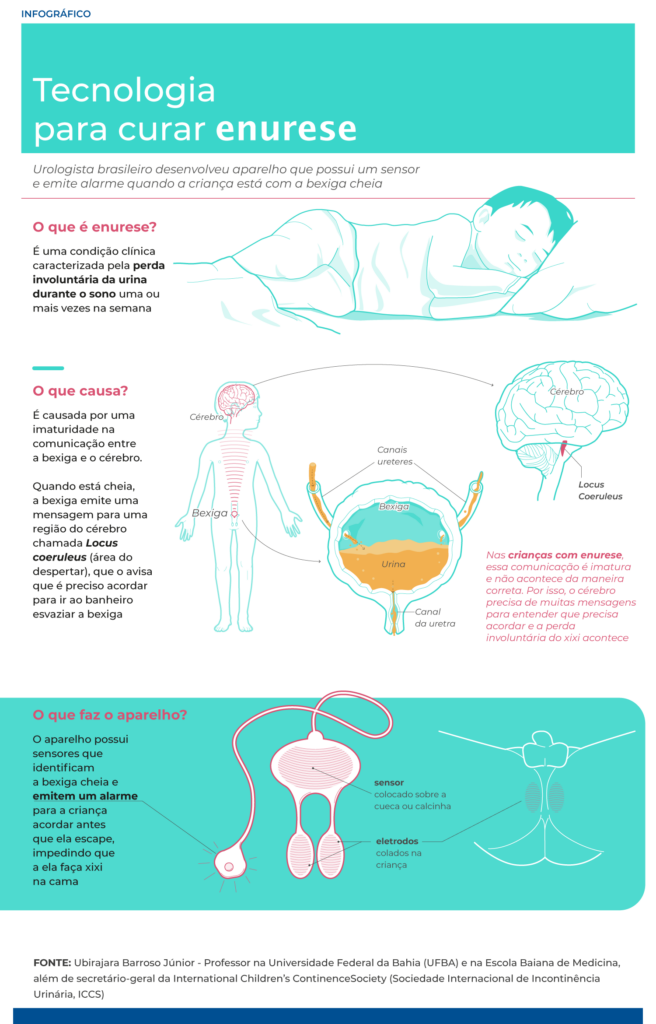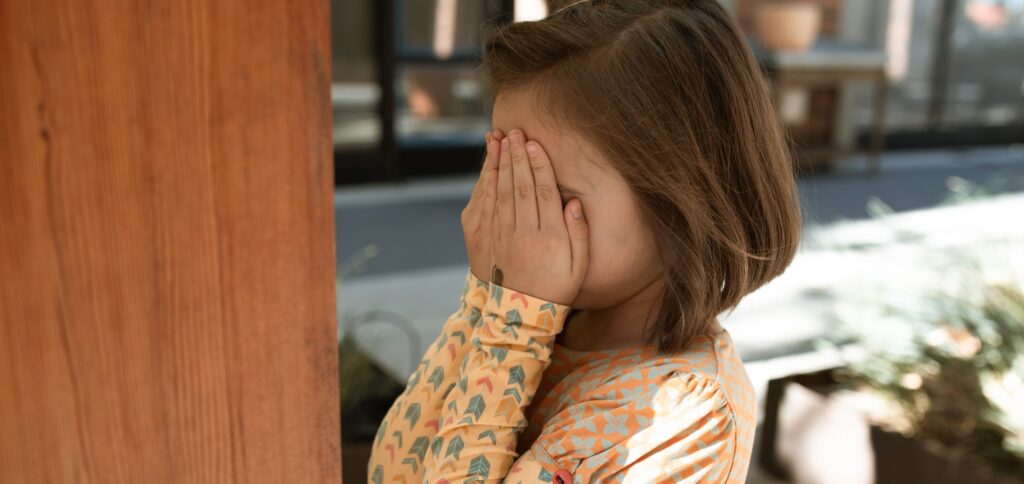A new piece of equipment developed by pediatric urologist Ubirajara Barroso Junior, general secretary of the International Children's Continence Society in partnership with American urologist Andrew Kirsch, prevents children from urinating in bed and conditions them to wake up when their bladder is full.
ADVERTISING
This equipment is being the subject of a randomized and controlled study at the Escola Baiana de Medicina, where Barros is a professor, and was presented last month at the American Congress of Urology as one of the ten main technological innovations in urology.
The new alarm has an important difference from existing models, which use humidity sensors and emit an alarm, but only after the child has gotten wet. After being placed on the child, the sensor is able to identify the stimulus to start urinating in the bed.
In addition to emitting a sound to wake her up (or wake up her parents), it triggers a neurostimulation mechanism that closes the sphincter, preventing urine from escaping.
ADVERTISING
“The child does not urinate. The alarm goes off before the first drop comes out,” said the urologist. According to Barroso, in this way, the brain conditioning to realize that the bladder is full and wake up to urinate is more effective than with currently available alarms.
See how it works in the infographic:

Discomfort, shame and obstacle to social interactions
Clara, 8 years old, managed to get rid of nocturnal enuresis after using the Brazilian device for three months – she is one of the participants in the study conducted by Barroso at the university in Bahia. Before that, the girl had already tried all possible homemade solutions to solve the problem, without success.
“I thought it was just a matter of adaptation. I tried to remove the diaper, but she ended up peeing. She started using larger size diapers, until reaching size P for geriatric diapers. It was at that moment that I realized something was wrong,” she says.
ADVERTISING
Clara was already over five years old and, as the nocturnal enuresis persisted, Maria tried behavioral changes: reducing liquids, taking her daughter to urinate before bed and setting the alarm clock to ring in the early hours of the morning, so she could take the child to the bathroom even when she didn't feel like it. .
“Due to her dependence on me waking her up to urinate in the early hours of the morning, she couldn’t sleep at anyone’s house, not even at her grandparents’ house”, recalls Maria.
It was Clara herself who saw a report on TV about bedwetting and discovered that there would be a study at the university. Maria signed up her daughter, who received the device, sensors, a manual and learned how the device worked.
ADVERTISING
“Not even a drop of pee is released and the sensor already triggers the alarm when it detects a full bladder. Sometimes she couldn't wake up, so I would wake her up. But parents need to be patient. We expect to resolve the problem immediately, but the solution does not happen overnight. It’s a gradual and time-consuming treatment”, says Maria.
The device is in the final phase of development and, according to Professor Barroso, the expectation is that by the end of the year the device will be submitted for evaluation by the National Health Surveillance Agency (Anvisa) to be launched on the Brazilian market.
(Source: Einstein Agency)
Read also



